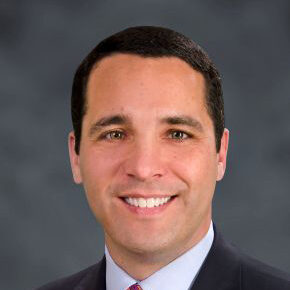At the time of writing, according to (Not Provided) Count, we'll hit 100% (not provided) on 29th November 2013. There's plenty of debate and discussion about what this might mean for Google, users and marketers. I'm more interested in where we go from here.
Here are a bunch of great posts addressing the (not provided) issue:
From the Post: Every time I see an SEO report that includes things like year-over-year or month-over-month data broken down by keyword or non-branded organic traffic, I die a little inside. Why you ask? Because it’s junk data.
From the Post: Myth: I can just look at the keyword data that remains for a trend if it isn’t exact.
Reality: You can’t take credit for an increase/decrease in non-branded keyword traffic when you’re missing data. The keyword data that remains is a statistically unsound sample and can’t be relied on for even a trend.
From the Post: Establish macro context, Understand the performance profile of the (not provided) traffic, Match up performance profile to Brand & Non-brand visits, Tentative conclusions, Landing page keyword referral analysis.
From the Post: finding opportunities to improve a page's performance or its ranking. If you see that a page of yours is receiving a lot of search traffic, or that a keyword is sending a lot of search traffic (or even a little bit of search traffic), but the page is not ranking very well, you know that by improving that page's ranking you have an opportunity to earn a lot more search traffic.
From the Post: Harness Paid Data.
From the Post: This is why you want to break out Landing Pages separate from the Overall numbers. With our downloadable spreadsheet, you can break out the traffic to a site’s top Landing Pages to determine if any branded bias exists for your site, as well.
From the Post: Here are five of our posts that deal either with (not provided) explicitly or the changing conception of keywords generally.
From the Post: One potential way to estimate the number of branded keywords that are coming from logged in Google users is to look at historical data.
From the Post: Perhaps more importantly, the same basic methods can be applied to other phrases (replacing your brand with another keyword segment – in my case, “seo” is a logical option – determining what percentage of our traffic is from “seo”-based phrases. You may be inclined to attempt to over-analyze your data. However, the closer the core metrics (pageviews for example) are, the less accurate your conclusions will be.
From the Post: Create Custom Reports for branded, non-branded, & (not provided) Goal Completions.
From the Post: Compare Google Analytics Keyword Data to Google Webmaster Tools Data.
Have additional ideas about coping with the 100% (not provided) future? Please, please, please share them below.

Here's a recent Google SERP for "𝘄𝗵𝗼 𝗮𝗿𝗲 𝘁𝗵𝗲 𝗯𝗲𝘀𝘁 𝗰𝗮𝗿 𝗮𝗰𝗰𝗶𝗱𝗲𝗻𝘁 𝗹𝗮𝘄𝘆𝗲𝗿𝘀 𝗶𝗻 𝗽𝗵𝗶𝗹𝗮𝗱𝗲𝗹𝗽𝗵𝗶𝗮." Ads? ❌LSAs? ❌Local Pack? ❌Links? ❌ 🔷 AI Overview? ✅ 6 firms listed. Only one tiny 🔗. Click the 𝗦𝗵𝗼𝘄 𝗺𝗼𝗿𝗲 button? 𝗬𝗼𝘂 𝗴𝗲𝘁: Here's a more detailed look at some of these firms: THE PEARCE LAW FIRM, P.C.Edith Pearce, […]
On April 22, 2025, Google sent an email updating Local Services Ads Additional Terms for Providers: Subject: Action required: important updates to Local Service Ads Additional Terms Many people are arguing that lawyers cannot participate in Local Services Ads, as this would constitute a per se violation of the Rules of Professional Conduct related to […]
Conrad and I recently joined Zack at Lawyerist to record a conversation about AI and marketing. You might think that we spend the whole time on how lawyers can use AI to publish content. You'd be wrong. While AI can certainly support publishing, there are many more interesting ways to use it in legal marketing. […]
As more legal services consumers turn to ChatGPT for local law firm recommendations, a fascinating intersection between AI, search, and maps unfolds. While Google remains the undisputed leader in local business data, ChatGPT is increasingly becoming an entry point for searchers seeking legal representation. But here’s the kicker: instead of keeping users within its ecosystem, […]
When law firms contact us, they usually want to talk: • PPC Ads • SEO Rankings • Lead Generation Very few want to talk: • Brand • Trust & Recognition • Emotional Connection Admittedly, much of this concerns that AttorneySync is known for lead generation across those common digital channels. But even when we start […]
According to an October 2024 study by SE Ranking: "The legal niche triggers the highest percentage of AIOs (77.67%). The average number of links matched between the AI Overview resources and the top 20 search results was 6.49 for legal topics. AI Overviews for legal topics most frequently link to NYCourts.gov (114 links), YouTube.com (48 […]
I'm grateful for my friend, Charley Mann of Law firm Alchemy. If you're a lawyer, subscribe to his Free Email List. In a recent email, Charley calls out bad guru advice on hiring: "Trying to execute a major SEO improvement? You need to find people who will help you, instead of trying to DIY it […]
If you’ve spent any time on LinkedIn, you’ve likely seen posts from law firm SEO experts showing off charts with an “up and to the right” trajectory. These screenshots, often pulled from tools like Semrush or Ahrefs, are meant to signal SEO success. And it’s not just the agencies celebrating—𝗹𝗮𝘄 𝗳𝗶𝗿𝗺𝘀 𝘁𝗵𝗮𝘁 𝗵𝗮𝘃𝗲 𝗵𝗶𝗿𝗲𝗱 𝘁𝗵𝗲𝗺 […]
Meh, links! All things being equal, links still tend to move the dial more than any other factor in legal SERPs. Maybe links are having a diminishing impact internet-wide. But in my experience, quality links, especially relevant links (both topically and geographically), tend to improve law firm visibility in search more than most everything else. […]